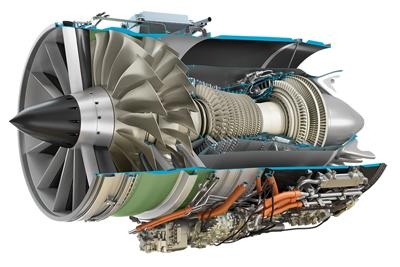Launching A New Era Of Efficient Supersonic Flight
At an NBAA press conference with Aerion Corporation, GE Aviation announced that it has completed the initial design of the first supersonic engine purpose-built for business jets. This new engine class, introduced as GE’s Affinity turbofan, is optimized with proven GE technology for supersonic flight and timed to meet the Aerion AS2 launch.

The Affinity is a new class of medium bypass ratio engines that provide exceptional and balanced performance across supersonic and subsonic flights. The Affinity integrates a unique blend of proven military supersonic experience, commercial reliability and the most advanced business jet engine technologies. GE’s Affinity is a twin-shaft, twin-fan turbofan controlled by a next generation Full Authority Digital Engine Control (FADEC) for enhanced dispatch reliability and onboard diagnostics. It is purposefully designed to enable efficient supersonic flight over water and efficient subsonic flight over land, without requiring modifications to existing compliance regulations. The engine is designed to meet stringent Stage 5 subsonic noise requirements and beat current emissions standards.
GE’s Affinity features:
- Efficient performance throughout the full flight envelope with a high-altitude service ceiling of 60,000.
- An advanced twin-fan with the highest bypass ratio of any supersonic engine.
- A special, non-augmented supersonic exhaust system.
- A proven engine core adapted from GE's commercial airline portfolio with billions of successful and
- reliable hours of operational service.
- A durable combustor with advanced coatings for sustained high-speed operation.
- Advanced acoustic technology designed to meet or exceed regulatory requirements.
- GE’s additive design & manufacturing technologies to optimize weight & performance.
“In the last 50 years, business aircraft speeds have increased by less than 10 percent,” said Brad Mottier, GE Vice President and General Manager for Business and General Aviation & Integrated Services. “Instead of going faster, cabins have increased in size and become more comfortable - and range has become longer. With large, comfortable cabin, long range aircraft in the marketplace, the next step is speed . . . made possible with GE’s Affinity.”
After two years of a preliminary study, GE Aviation and Aerion launched a formal process in May of 2017 to define and evaluate a final engine configuration for the AS2 supersonic business jet. A GE Project team, supported by a dedicated Engineering team, continue to work with Aerion in a formal and gated process. The next design review is targeted 2020, signaling beginning of detailed design and test article production. Aerion is collaborating with GE Aviation, Lockheed Martin and Honeywell to develop the AS2.
“Our mission is to enhance global mobility with supersonic speed, starting with business aviation, and following with successively faster and larger designs for business and commercial aviation,” said Aerion CEO Tom Vice. “GE Aviation is making this new efficient, sustainable supersonic era possible through its pioneering work on the Affinity engine.” GE Aviation has more than 60 years of experience in designing and building engines adapted for supersonic aircraft. Its first engine to push us into the supersonic era was the J79, which was introduced with Lockheed on their F-104 Starfighter in the mid-1950s.
(Image provided with GE Aviation news release)
 NTSB Final Report: Aviat A1
NTSB Final Report: Aviat A1 ANN's Daily Aero-Linx (07.08.25)
ANN's Daily Aero-Linx (07.08.25) Classic Aero-TV: Fly Corvairs Reliable Engine Alternative
Classic Aero-TV: Fly Corvairs Reliable Engine Alternative ANN FAQ: Contributing To Aero-TV
ANN FAQ: Contributing To Aero-TV Classic Aero-TV: CiES Fuel-Quantity and e-Throttle Systems Praised
Classic Aero-TV: CiES Fuel-Quantity and e-Throttle Systems Praised



